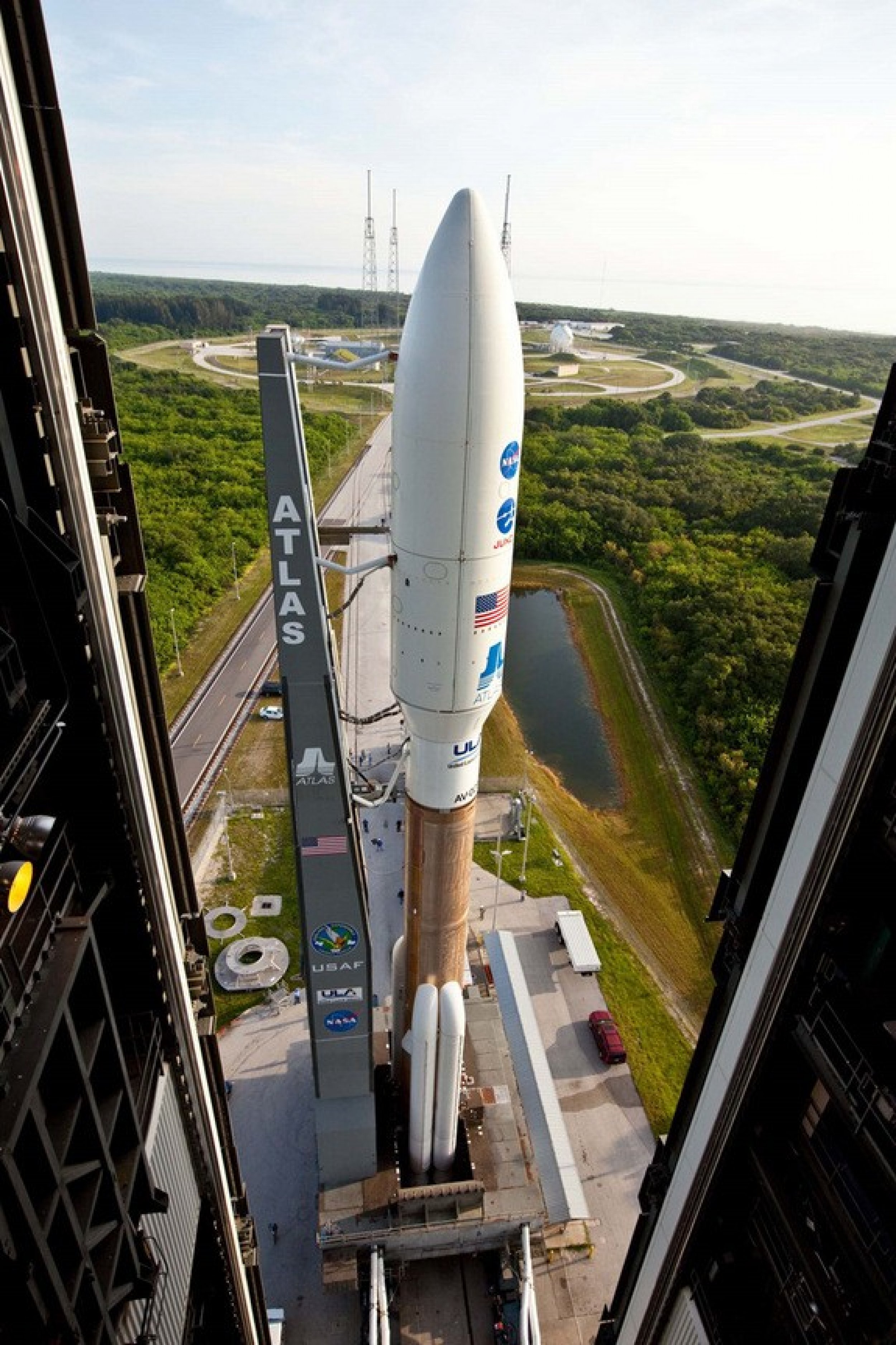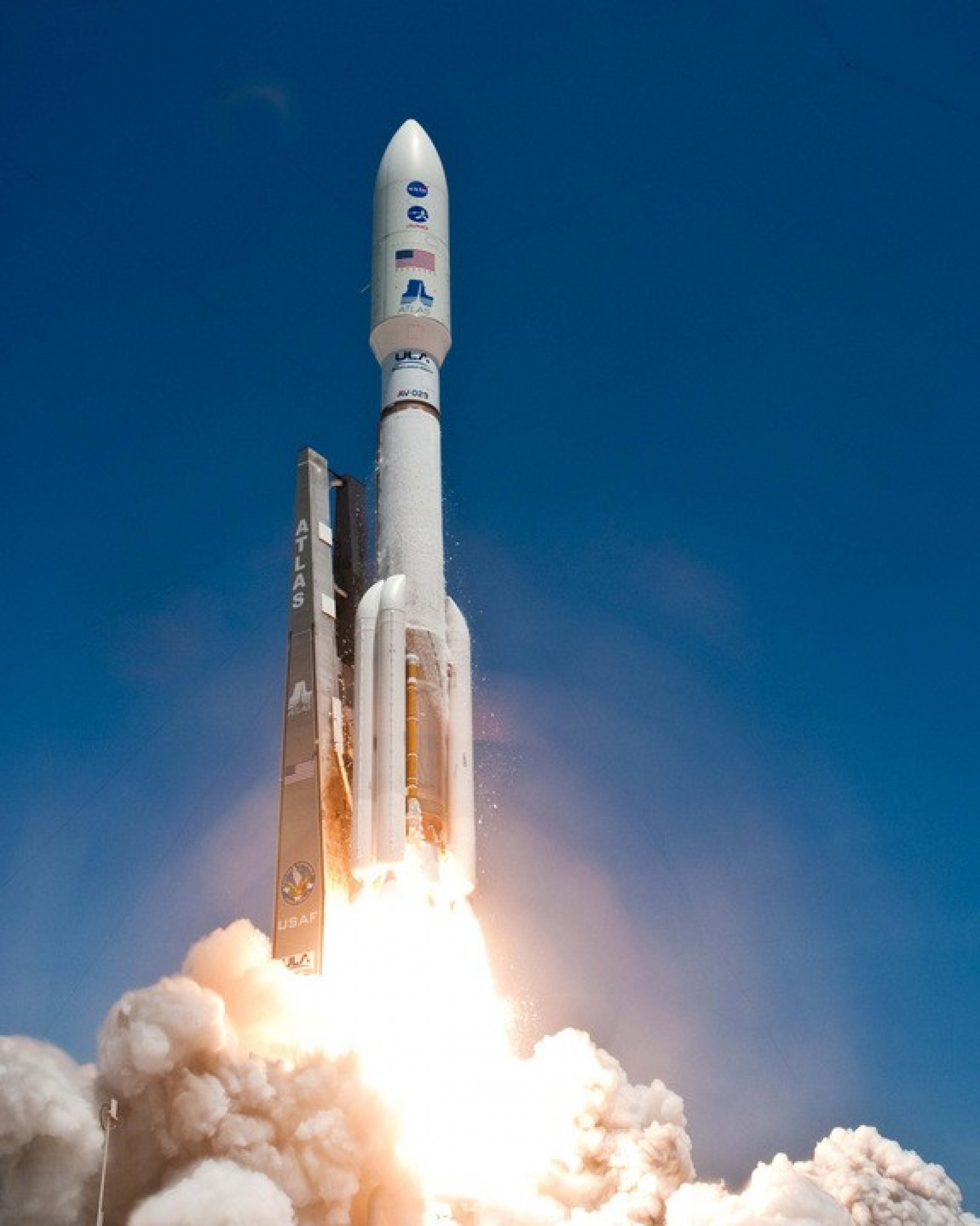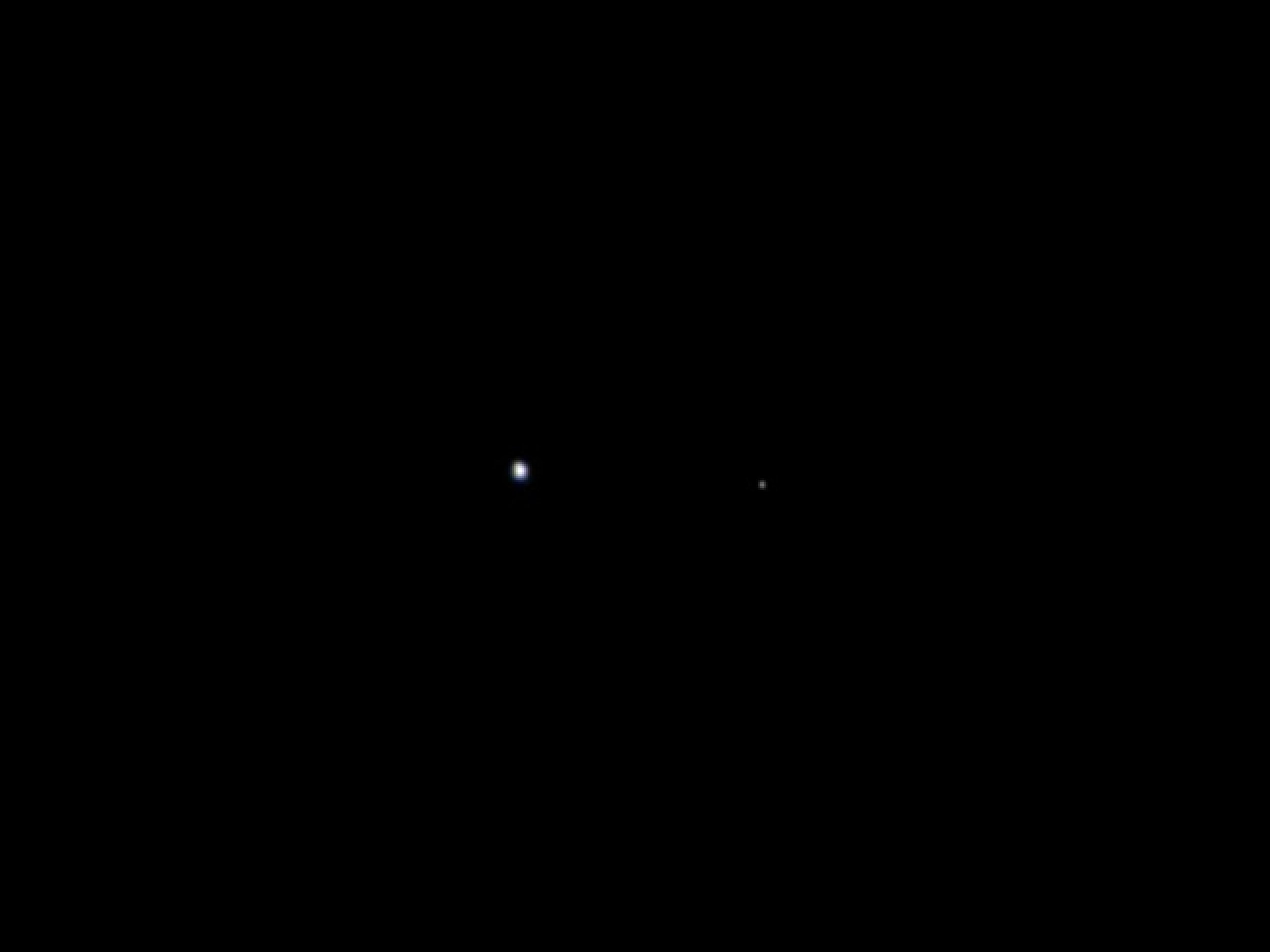NASA’s Juno Spacecraft Captures Images of Earth and Moon 6 Million Miles Away [PHOTOS]
On its way to probe Jupiter, NASA's Juno spacecraft took the time to capture its home planet Earth and its moon looking like tiny white dots.
JunoCam, the name given to the spacecraft's camera, took the image on Aug. 26 when the spacecraft was about 6 million miles (9.66 million kilometers) away from Earth.
This is a remarkable sight people get to see all too rarely, said Scott Bolton, Juno principal investigator from the Southwest Research Institute in San Antonio, in a statement. This view of our planet shows how Earth looks from the outside, illustrating a special perspective of our role and place in the universe. We see a humbling yet beautiful view of ourselves.
NASA said the image was taken as part of the mission team's checkup of the Juno spacecraft. The team is conducting its initial detailed checks on the spacecraft's instruments and subsystems after its launch on Aug. 5.
Juno is a solar-powered spacecraft that lifted off from Cape Canaveral Air Force Station in Florida to begin a five-year journey to Jupiter. It will conduct a deep examination of the interior of the largest planet in the solar system to see if there is a hidden core below the thick atmosphere.
The mission is said to cost $1.1 billion and is a 400 million mile journey. The solar-powered spacecraft is expected to arrive in 2016 and will have to make a precise orbit over the planet's poles. Once in Jupiter, the spacecraft will spend about one Earth year making 33 elliptical polar orbits, going as close as 3,100 miles above the clouds. It will use its eight science instruments to probe beneath the gas giant's obscuring cloud cover to learn more about its origins, structure, atmosphere and magnetosphere, and look for a potential solid planetary core.
NASA said Juno covered the distance from Earth to the moon (about 250,000 miles or 402,000 kilometers) in less than one day's time.



© Copyright IBTimes 2025. All rights reserved.






















